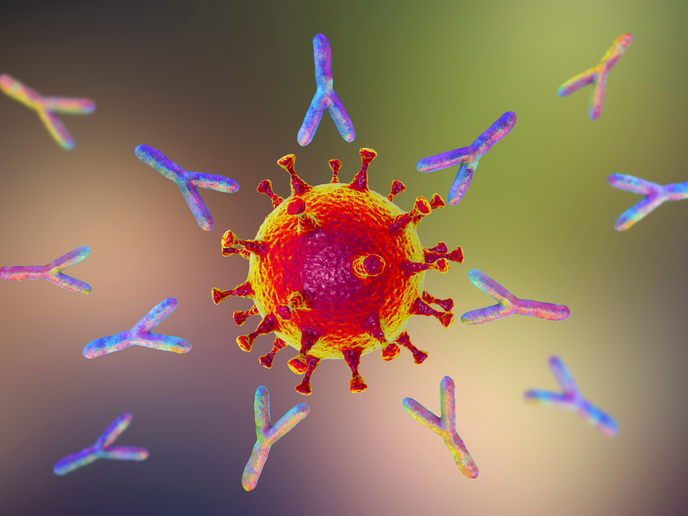Potent neutralising antibodies show promise for use in COVID-19 treatment and prevention
According to the European Centre for Disease Prevention and Control, since the start of the coronavirus pandemic and as of 4 March, about 114.5 million people worldwide have contracted the virus and 2.57 million have died. Although governments have authorised the use of different drugs and vaccines to tackle the disease, new SARS-CoV-2 variants will make it more difficult to stop the coronavirus from spreading even further. The development of other preventive and therapeutic tools for combating the virus and its variants is therefore vital. Human monoclonal antibodies (mAbs) are one of these tools. Produced – as their name suggests – by a single clone of white blood cells, they are engineered to imitate how the immune system fights off harmful pathogens. mAbs are also the focus of a recent study published in the journal ‘Cell’. Supported by the EU-funded vAMRes and EVAg projects, the study describes the development of very potent human mAbs that, at low concentrations, neutralise the SARS-CoV-2 virus and its known mutations.
Overcoming current mAb limitations
The low concentrations of the antibodies described in the study is an important development since, to date, clinical trials against SARS-CoV-2 have only made use of high doses of mAbs, ranging between 500 and 8 000 mg. These high doses can only be delivered intravenously, “making this therapeutic intervention extremely costly and therefore available almost exclusively in high-income countries,” the authors state. The researchers selected extremely potent antibodies that could be used at low dosages to make them affordable and able to be delivered by intramuscular injection. The second limitation this study has overcome is the risk of antibody-dependent enhancement (ADE). ADE occurs when a virus binds to antibodies that enhance its entry into host cells as well as its replication. Simply put, instead of protecting the body from the virus, the antibodies make the infection even worse. In their work, the researchers engineered mAbs in such a way that no ADE is induced. SARS-CoV-2 is primarily able to penetrate and infect host cells because of its spike proteins. For this reason, the scientists focused on mAbs specific to the spike protein, single cell sorting 4 277 SARS-CoV-2 spike protein-specific memory B cells from 14 recovered COVID-19 patients. They identified 453 neutralising antibodies, of which 220 were expressed as immunoglobulin G antibodies – the most common type of antibody found in the blood that protects against bacterial and viral infections.
Important antibody results
The study supported by the vAMRes (Vaccines as a remedy for antimicrobial resistant bacterial infections) and EVAg (European Virus Archive goes global) projects tested the neutralising potency of the identified mAbs. The researchers found that up to 65.9 % of the antibodies had a low neutralising potency and required more than 500 ng/mL to neutralise the wild-type SARS-CoV-2. A smaller proportion of the mAbs (23.6 %) had an intermediate potency that needed 100 to 500 ng/mL to neutralise the virus, while 9.1 % required between 10 and 100 ng/mL. Only 1.4 % of the mAbs were classified as extremely potent, neutralising the authentic virus with 1 to 10 ng/mL. The most potent mAb engineered to reduce the risk of ADE neutralised the authentic wild-type virus and emerging variants. “The extremely potent mAb described in our study is likely to allow the use of lower quantities of antibodies to reach prophylactic and therapeutic efficacy and as a consequence, decrease the cost of goods and enable sustainable development and manufacturability,” the authors conclude. For more information, please see: vAMRes project EVAg project website
Keywords
vAMRes, EVAg, SARS-CoV-2, COVID-19, coronavirus, virus, antibody, mAb, monoclonal antibody



